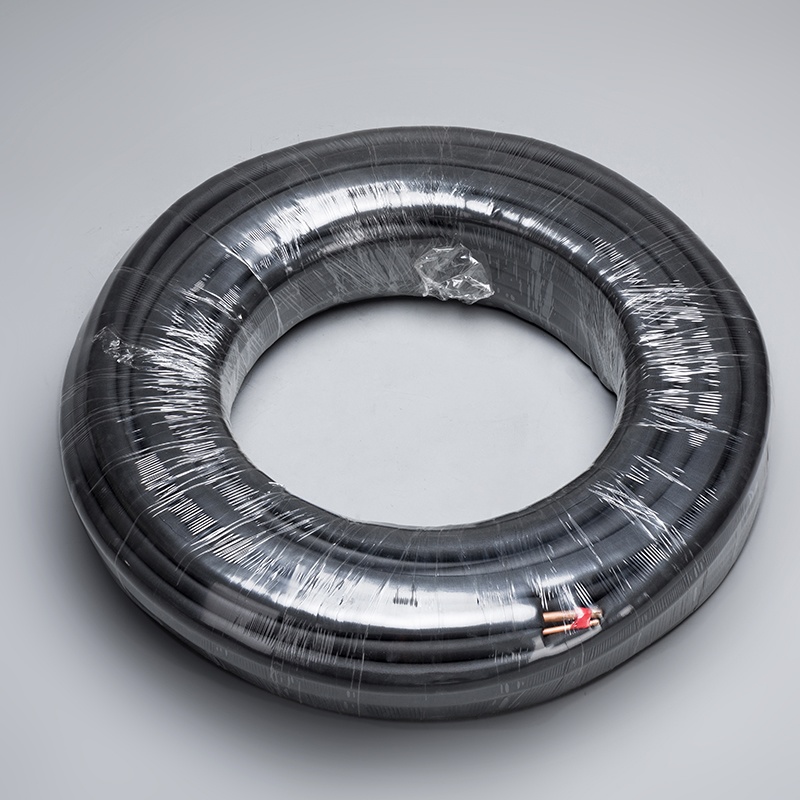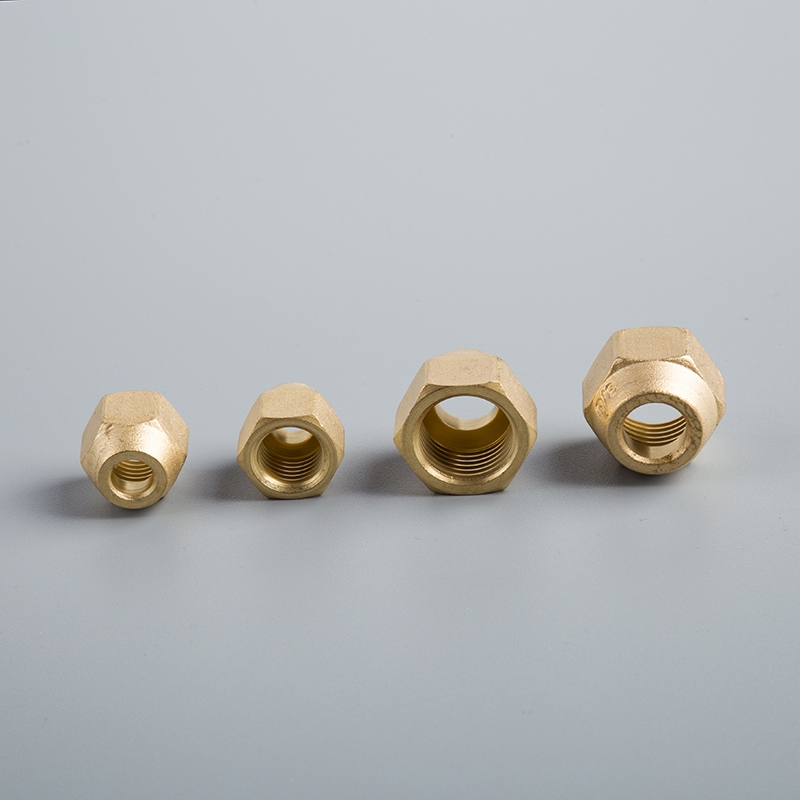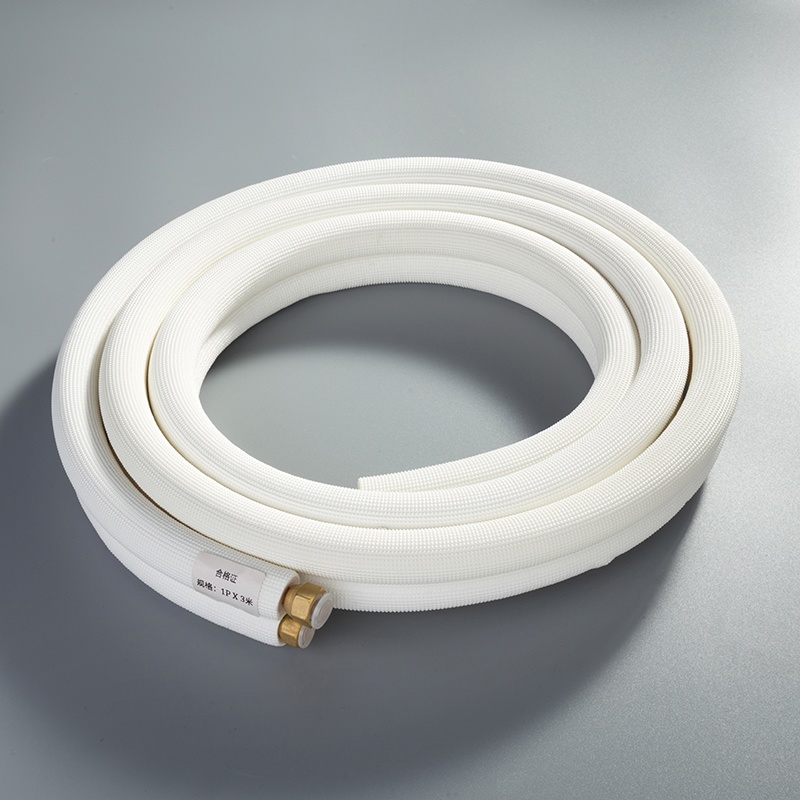Essential Tips for Quality Control in Copper Pipe Manufacturing

In the realm of 1/4 3/8 twin copper pipe co manufacturing, ensuring quality control is paramount. Detecting and addressing common quality issues can significantly impact the integrity of the final product. This blog aims to equip industry professionals with practical tips to enhance their quality control processes effectively. By delving into the nuances of surface defects, dimensional inaccuracies, and material impurities, manufacturers can elevate their standards and uphold excellence in 1/4 3/8 twin copper pipe co production.
Identifying Common Quality Issues

When it comes to 1/4 3/8 twin copper pipe co manufacturing, pinpointing common quality issues is crucial for maintaining high standards. By detecting and addressing these issues promptly, manufacturers can ensure the integrity of their products. Let's delve into the nuances of surface defects, dimensional inaccuracies, and material impurities to elevate the quality control processes effectively.
Surface Defects
Importance of Detecting Surface Defects Early
Initiating early detection of surface defects is vital in preventing production delays and ensuring product quality.
Timely identification allows for swift corrective actions to be implemented, minimizing the impact on overall manufacturing processes.
Risks Associated with Surface Defects
Neglecting surface defects can lead to compromised product aesthetics and functionality.
Unaddressed defects may result in customer dissatisfaction and potential safety hazards in applications.
Techniques for Identifying and Addressing Surface Defects
Implement regular visual inspections along the production line to spot any anomalies promptly.
Utilize automated systems equipped with high-resolution cameras for precise defect detection.
Conduct rigorous testing procedures such as pressure tests to validate the integrity of each copper pipe.
Dimensional Inaccuracies
Importance of Maintaining Accurate Dimensions
Ensuring precise dimensions is essential for seamless integration of copper pipes in various systems.
Accuracy in dimensions guarantees optimal performance and compatibility with fittings and connectors.
Risks of Dimensional Inaccuracies
Dimensional deviations can lead to leakages, improper fits, and inefficiencies in plumbing installations.
Inaccurate dimensions may necessitate costly rework or replacements, impacting both time and resources.
Methods to Ensure Dimensional Accuracy
Employ advanced measuring tools like digital calipers or laser measurement devices for precise assessments.
Establish stringent calibration protocols for machinery involved in shaping copper pipes accurately.
Conduct regular audits on dimensional specifications throughout the manufacturing process to maintain consistency.
Material Impurities
Importance of Using Pure Materials
Utilizing high-quality, pure materials is fundamental for producing durable and corrosion-resistant copper pipes.
Pure materials contribute to enhanced longevity and reliability of the final products.
Risks of Material Impurities
Presence of impurities can weaken structural integrity, leading to premature failures in copper pipe applications.
Impurities may accelerate corrosion processes, reducing the lifespan and performance efficiency of the pipes.
Techniques for Detecting and Eliminating Impurities
Implement stringent material sourcing standards to ensure purity from reputable suppliers.
Conduct thorough material testing procedures such as spectroscopic analysis to identify any contaminants.
Integrate purification techniques like filtration or chemical treatments during manufacturing to eliminate impurities effectively.
Implementing Effective Quality Control Measures

In the realm of 1/4 3/8 twin copper pipe co manufacturing, the implementation of robust quality control measures is essential to uphold product integrity and meet industry demands. By investing in stringent standards and leveraging advanced testing technologies, manufacturers can ensure the reliability and safety of copper pipes. Automation has played a pivotal role in revolutionizing quality control practices, offering benefits that streamline production processes and elevate product quality.
Regular Inspections
Importance of Regular Inspections
Ensuring regular inspections throughout the manufacturing process is crucial for detecting any deviations from quality standards promptly.
Inspection protocols help identify potential defects or irregularities that could compromise the performance and durability of copper pipes.
Steps to Conduct Effective Inspections
Establish a comprehensive inspection schedule that covers key stages of production, from raw materials to finished products.
Utilize automated inspection systems to enhance accuracy and efficiency in defect detection.
Implement detailed visual assessments and non-destructive testing methods to verify the structural integrity of copper pipes.
Employee Training
Importance of Training Employees
Providing comprehensive training programs for employees is vital to ensure they understand quality control protocols and procedures.
Well-trained staff contribute to maintaining consistent product quality and adherence to industry regulations.
Key Areas of Focus in Training Programs
Emphasize the significance of quality control measures in preserving product integrity and customer satisfaction.
Train employees on utilizing advanced technologies for inspection and testing purposes effectively.
Educate staff on identifying common defects, such as surface irregularities or material impurities, during the production process.
Use of Advanced Technology
Importance of Technology in Quality Control
Incorporating advanced technologies into quality control processes enhances precision, efficiency, and overall product quality.
Automated systems offer unparalleled accuracy in defect detection, ensuring that copper pipes meet stringent industry standards.
Examples of Advanced Technologies Used in the Industry
Laser Scanning: Utilized for precise dimensional measurements to ensure compliance with specified tolerances.
Ultrasonic Testing: Detects internal defects within material structures, providing valuable insights into overall pipe quality.
Automated Visual Inspection Systems: Enhance inspection accuracy by reducing human error and variability in defect identification.
Continuous Improvement and Feedback
In the realm of 1/4 3/8 twin copper pipe co manufacturing, the pursuit of excellence through continuous improvement is a cornerstone of success. By embracing a culture of innovation and feedback utilization, manufacturers can propel their quality control processes to new heights. Understanding the benefits of continuous improvement and implementing effective strategies can foster a dynamic environment conducive to growth and enhanced product quality.
Importance of Continuous Improvement
Benefits of continuous improvement
Enhances Operational Efficiency: Streamlining processes through ongoing enhancements optimizes production workflows, reducing waste and maximizing productivity.
Drives Innovation: Encouraging a mindset of continual improvement fosters creativity and innovation, leading to novel solutions for quality control challenges.
Boosts Customer Satisfaction: Consistent improvements in product quality result in higher customer satisfaction levels, fostering loyalty and trust in the brand.
Ensures Competitiveness: Staying ahead in the market requires constant evolution; continuous improvement enables companies to remain competitive in the industry.
Promotes Employee Engagement: Involving employees in improvement initiatives boosts morale, empowers teamwork, and cultivates a culture of shared success.
Strategies for implementing continuous improvement
Establish Clear Objectives: Define specific goals for improvement initiatives, aligning them with overall quality control objectives.
Foster Collaboration: Encourage cross-departmental collaboration to gather diverse perspectives and insights for innovative solutions.
Implement Feedback Loops: Create mechanisms for collecting feedback from employees at all levels to identify areas for enhancement.
Embrace Kaizen Principles: Adopt the philosophy of Kaizen by promoting small, incremental changes that cumulatively lead to significant improvements.
Monitor Progress Continuously: Regularly track key performance indicators (KPIs) related to quality control to assess the impact of improvement efforts.
Gathering and Utilizing Feedback
Importance of feedback in quality control
Feedback serves as a valuable tool in refining processes, enhancing product quality, and driving organizational growth within 1/4 3/8 twin copper pipe co manufacturing. By actively seeking feedback from stakeholders at various stages of production, manufacturers can gain invaluable insights that inform decision-making and foster continuous improvement.
Methods for gathering and utilizing feedback
Conduct Surveys: Implement regular surveys among employees to gather input on existing processes, identify pain points, and uncover opportunities for enhancement.
Engage Focus Groups: Organize focus group sessions with relevant stakeholders to delve deeper into specific quality control issues and brainstorm effective solutions collaboratively.
Leverage Technology Platforms: Utilize digital platforms or software tools that facilitate real-time feedback collection, analysis, and action planning for swift process improvements.
Establish Open Communication Channels: Encourage an open-door policy where employees feel comfortable sharing feedback directly with management or designated quality control teams.
Analyze Data Trends: Use data analytics tools to identify patterns or trends in feedback responses, enabling data-driven decision-making for targeted quality control enhancements.
Maintaining stringent quality control measures is the cornerstone of successful 1/4 3/8 twin copper pipe co manufacturing. Reflecting on the significance of precise inspections and employee training, manufacturers can elevate their standards effectively. Implementing advanced technologies and embracing continuous improvement strategies are pivotal for enhancing product integrity. By incorporating feedback loops and fostering a culture of innovation, the industry can propel towards a future defined by excellence and reliability in copper pipe production. Embrace these tips to ensure unparalleled quality control practices in the dynamic landscape of 1/4 3/8 twin copper pipe co manufacturing.
See Also
Exploring the Quality Assurance Strategies for Copper Tubing Production
Innovative Approaches to Ensuring Copper Tubing Quality
Achieving Excellence in Copper Tubing Quality Management
Key Guidelines for Installing 1/4 Copper Tubing Connectors
Comprehensive Manual for Sustaining Copper Tubing Performance


